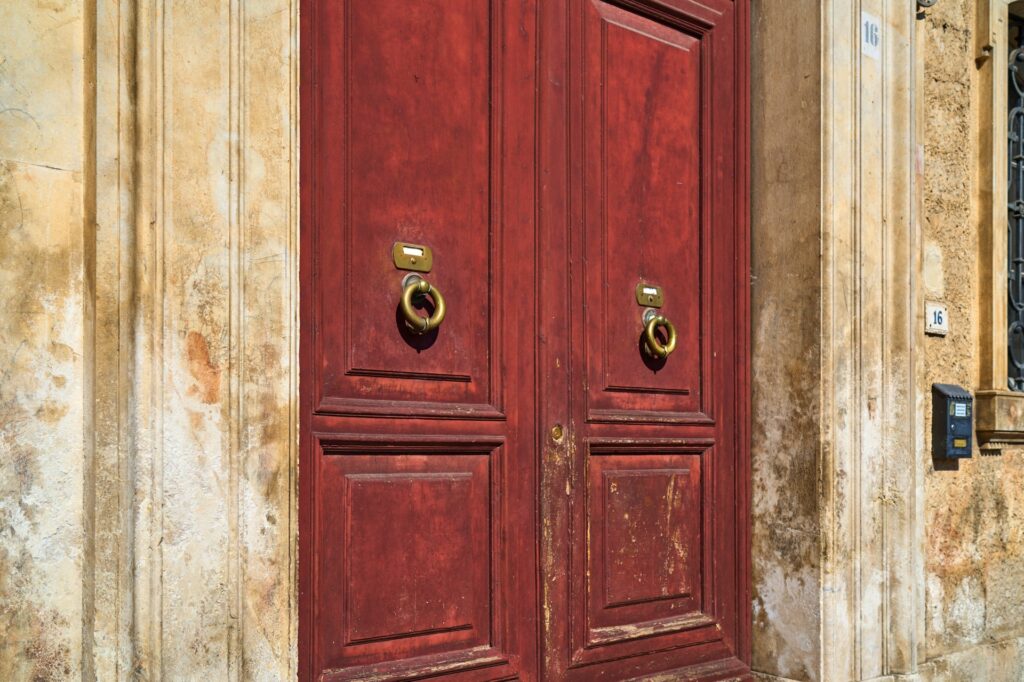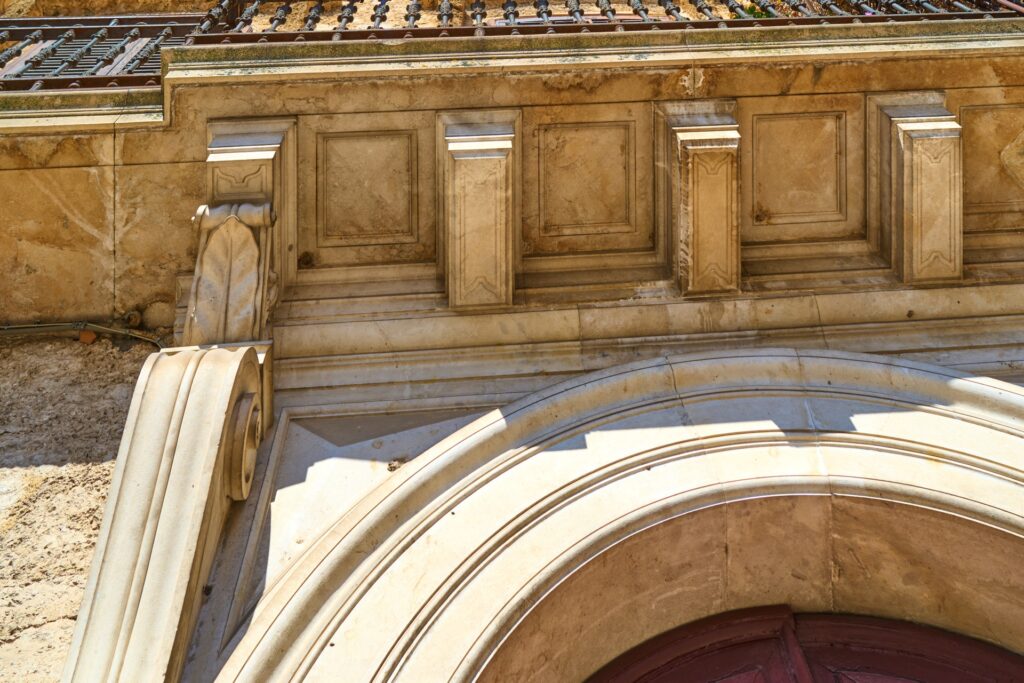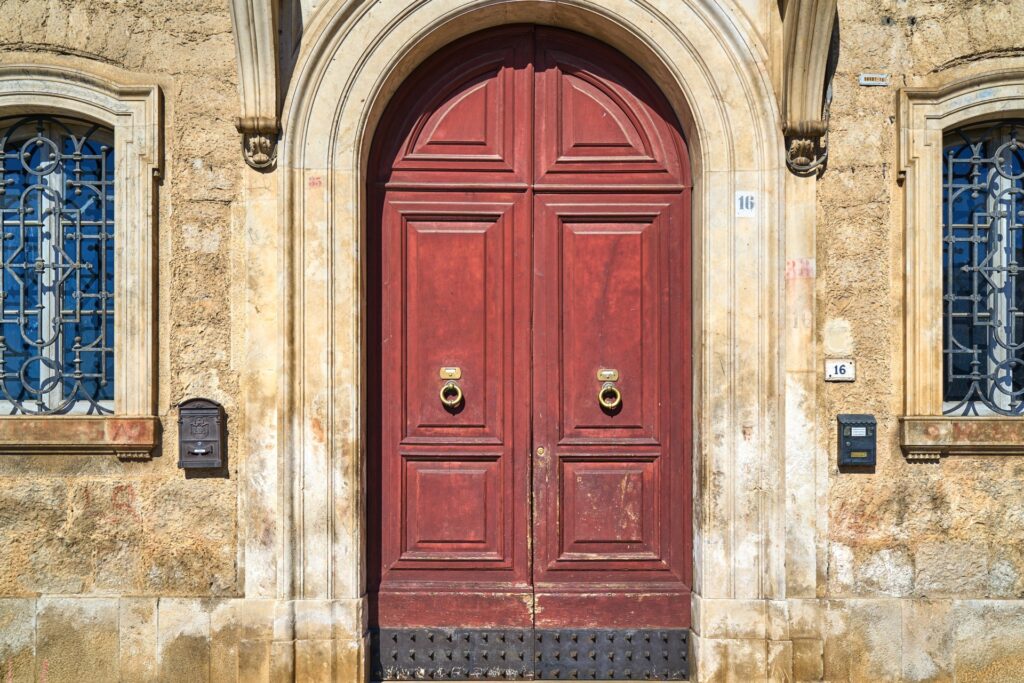House of the Beam
Historical landmark
Palazzo Tempesta-Cugini is one of the most beautiful buildings in San Donato. Its location marks the expansion of the town along the state road connecting Lazio and Abruzzo. The road and palace were built at the end of the 19th century by Carlo Tempesta, an esteemed Sandonatese builder.
The building was started in 1893 and opened in 1900. In the following years much of the building and the main entrance were purchased by Cesidio Cugini (Br'gantiëglië). In 1932, on the occasion of the tenth anniversary of the March on Rome, the property was used as a Casa del Fascio. During the German occupation it became the square command (Kommandantur) of San Donato. Sixteen foreign Jews captured by German military police on April 6, 1944 were interrogated in the building: after interrogation they were first transferred to Rome for identification and then deported to Auschwitz.
The palace headquarters of fascist organizations
In 1924 one of the rooms in the Town Hall on Clock Street was established as the local headquarters of the Fascio. The city council unanimously resolved to grant "the use of the room used for the Conciliation Office." With the fascistization of institutions it became necessary to have a venue that could accommodate, not only meetings, but also various party organizations. In 1932 it was decided to rent Palazzo Tempesta-Cugini because it was easy to access and had a square next to it that allowed for outdoor activities, such as gymnastic essays by the Balilla.
On January 14, 1933, Podesta Guido Massa resolved a grant to furnish the building as the "new headquarters of all existing fascist institutions in the municipality." In 1938 Podesta Amedeo Fabrizi renewed the need to purchase the building to make it the municipal residence. The building, in addition to the Casa del Fascio, housed the Drawing School and the headquarters of the Volunteer Militia for National Security.
With the arrival of the Germans, it becomes Square Command.
In early October 1943, units of the 305th Infantry Division (305. Infanterie-Division) arrived in San Donato and the Comino Valley. Local command headquarters were organized in the valley's municipalities, responsible for the security of small towns and the rear, auxiliary troop services, the procurement of local manpower and resources (food, crafts, services), the prevention of acts of sabotage and the search for spies, straggling personnel, escaped Allied prisoners, and Jews. German commanders chose the Casa del Fascio to establish the square command (Kommandantur).
Under the orders of a stern Prussian lieutenant, the Germans requisitioned provisions and dozens of houses, palaces and country cottages to be used as offices, kitchens, rooms for officers and troop, representation rooms, dressing rooms, material and weapons depots, mule stables, and workshops. On the night of December 21-22, the 305th Infantry Division was succeeded by the 5th Mountain Hunters Division (5. Gebirs Division), which had already deployed to Leningrad, Russia.
Operation of the Kommandantur
The Kommandantur was in charge of the civil and military administration of the territory: it controlled the activities of the municipality, the podesta and local authorities; it issued orders such as curfews; it managed the supply of provisions; and it sourced laborers for public utility work or the construction of fortifications. Interrogations of those suspected of helping Jews or former Allied prisoners hiding in the mountains took place in the Kommandantur.
On April 6, 1944, the sixteen foreign Jews captured by German military police were also taken to the palace. With them were interrogated Pasqualina Perrella and Carmela Cardarelli, two municipal employees accused of forging documents to save Jews interned in the village. After interrogation, the internees were loaded onto a truck positioned in the nearby square and transferred to Rome, to the Regina Coeli prison.
The following day they were taken to the Fossoli (Carpi) concentration camp and from there, by cattle train, ended up deported to Auschwitz. Only three survived the extermination.
The building was started in 1893 and opened in 1900. In the following years much of the building and the main entrance were purchased by Cesidio Cugini (Br'gantiëglië). In 1932, on the occasion of the tenth anniversary of the March on Rome, the property was used as a Casa del Fascio. During the German occupation it became the square command (Kommandantur) of San Donato. Sixteen foreign Jews captured by German military police on April 6, 1944 were interrogated in the building: after interrogation they were first transferred to Rome for identification and then deported to Auschwitz.
The palace headquarters of fascist organizations
In 1924 one of the rooms in the Town Hall on Clock Street was established as the local headquarters of the Fascio. The city council unanimously resolved to grant "the use of the room used for the Conciliation Office." With the fascistization of institutions it became necessary to have a venue that could accommodate, not only meetings, but also various party organizations. In 1932 it was decided to rent Palazzo Tempesta-Cugini because it was easy to access and had a square next to it that allowed for outdoor activities, such as gymnastic essays by the Balilla.
On January 14, 1933, Podesta Guido Massa resolved a grant to furnish the building as the "new headquarters of all existing fascist institutions in the municipality." In 1938 Podesta Amedeo Fabrizi renewed the need to purchase the building to make it the municipal residence. The building, in addition to the Casa del Fascio, housed the Drawing School and the headquarters of the Volunteer Militia for National Security.
With the arrival of the Germans, it becomes Square Command.
In early October 1943, units of the 305th Infantry Division (305. Infanterie-Division) arrived in San Donato and the Comino Valley. Local command headquarters were organized in the valley's municipalities, responsible for the security of small towns and the rear, auxiliary troop services, the procurement of local manpower and resources (food, crafts, services), the prevention of acts of sabotage and the search for spies, straggling personnel, escaped Allied prisoners, and Jews. German commanders chose the Casa del Fascio to establish the square command (Kommandantur).
Under the orders of a stern Prussian lieutenant, the Germans requisitioned provisions and dozens of houses, palaces and country cottages to be used as offices, kitchens, rooms for officers and troop, representation rooms, dressing rooms, material and weapons depots, mule stables, and workshops. On the night of December 21-22, the 305th Infantry Division was succeeded by the 5th Mountain Hunters Division (5. Gebirs Division), which had already deployed to Leningrad, Russia.
Operation of the Kommandantur
The Kommandantur was in charge of the civil and military administration of the territory: it controlled the activities of the municipality, the podesta and local authorities; it issued orders such as curfews; it managed the supply of provisions; and it sourced laborers for public utility work or the construction of fortifications. Interrogations of those suspected of helping Jews or former Allied prisoners hiding in the mountains took place in the Kommandantur.
On April 6, 1944, the sixteen foreign Jews captured by German military police were also taken to the palace. With them were interrogated Pasqualina Perrella and Carmela Cardarelli, two municipal employees accused of forging documents to save Jews interned in the village. After interrogation, the internees were loaded onto a truck positioned in the nearby square and transferred to Rome, to the Regina Coeli prison.
The following day they were taken to the Fossoli (Carpi) concentration camp and from there, by cattle train, ended up deported to Auschwitz. Only three survived the extermination.
Do you want to visit this attraction?
Book your vacation now.
House of the Beam,
Piave Street,
14,
03046 San Donato Val di Comino FR,
Italy
-
Via Piave, 14, 03046 San Donato Val di Comino FR, Italy
Details
Suitable for
- Accessible to wheelchair users, Childrens, Couples, Families, Groups, Solo travelers
Best season to go
- All the seasons
Duration / time of visit
- Up to 1 hour
Type of tour
- This attraction is part of a guided tour
Are audio guides provided?
- Yes, upon request
Available languages
- English, Italian
Ticket price
- Does not require a ticket






































